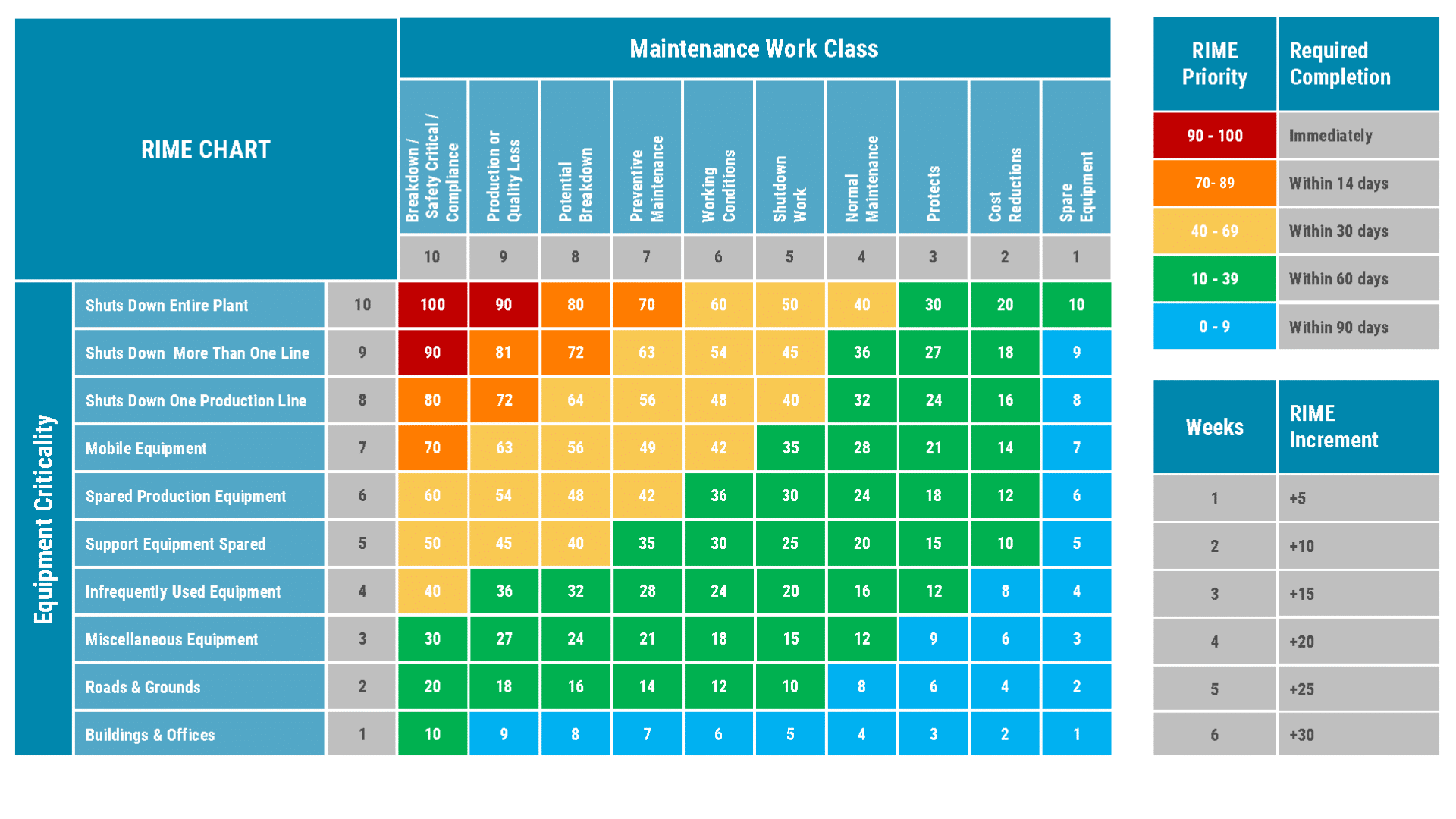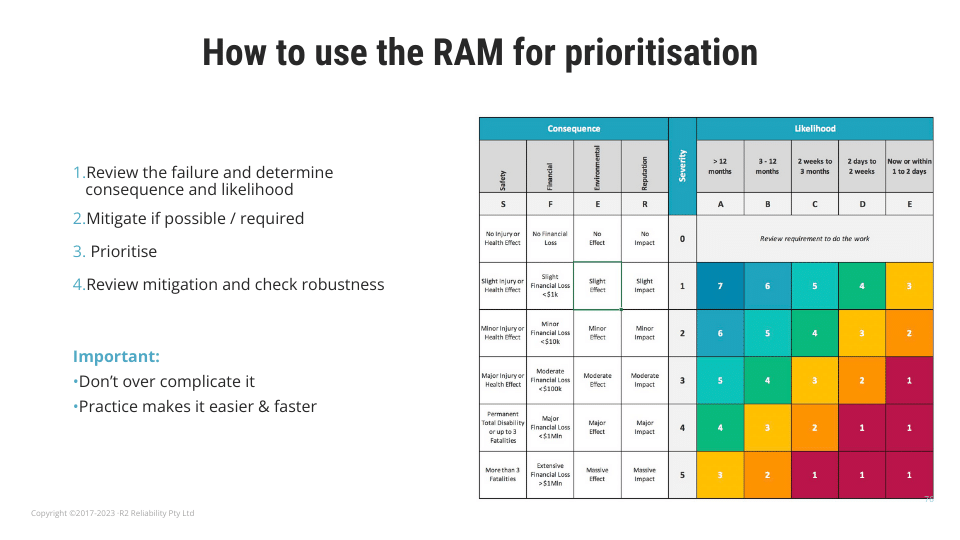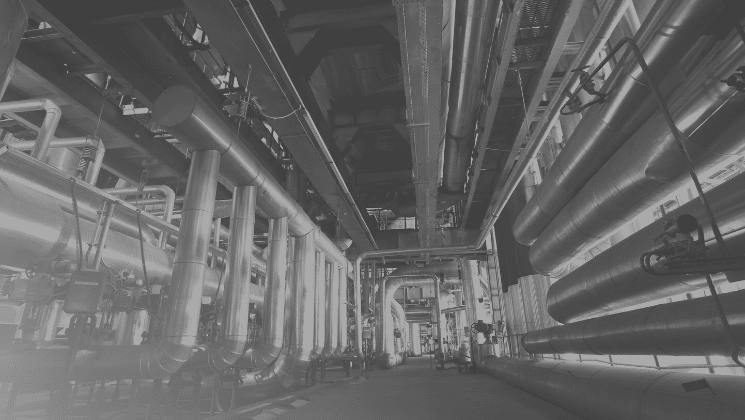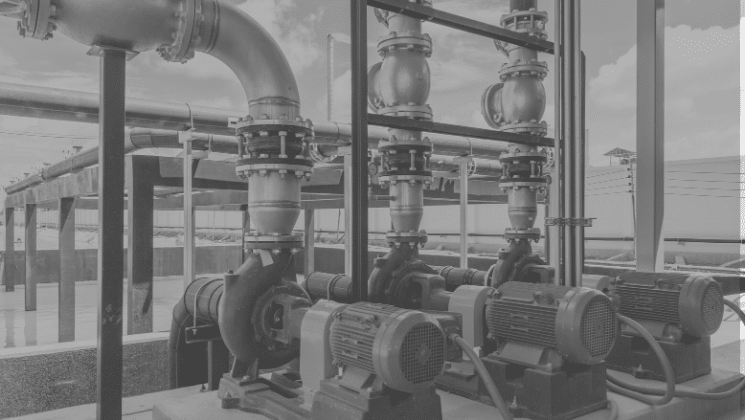Many organisations are stuck in a ‘vicious cycle of reactive maintenance’.
It’s an all-too-common situation. Once you finally get that emergency fixed and resolved… you find yourself looking at 10 more emergencies that you need to deal with. And being ‘emergencies’, there is no time to plan. No time to schedule. Forget about staging and kitting. The result is that whilst doing the work, your crew experiences heaps of delays. Lots of frustration. And there never seems to be any time, energy, or resources to escape from this nightmare.
That’s why in this article, I want to talk about three practices you need to implement to finally escape that vicious cycle, so that you finally have that breathing room to do other important tasks and improvements. But first…
What is “The Vicious Cycle” of Reactive Maintenance?
It’s called a cycle for a reason. Once you’re inside, it’s almost impossible to escape without getting outside help. It’s a cycle of constantly repairing equipment breakdowns AFTER they occur. And it is so much more expensive than well-planned and scheduled maintenance. Here’s how it usually goes—
- Another breakdown occurs, and an already busy maintenance team is further overloaded with repairs.
- To speed things up, temporary repairs are made. But since these don’t last, they actually lead to more re-work and a bigger maintenance burden.
- As costs increases, there is more pressure on head count and budgets and cuts are made. The pressure on the maintenance team further mounts.
- With less people and more work, the backlog continues to grow. Work standards drop. Morale drops.
- Preventive maintenance routines are no longer all done as there simply isn’t enough time in the day. And with PM’s being missed, we now have more breakdowns occurring and we’re back at the beginning of the reactive cycle.
I know.
It’s a sad, soul-destroying cycle. And I’ve been there before. If you don’t know what to do, you’ll lose your hair from all the stress and anxiety. But luckily, you can break out of this cycle. You just need to know how. And in my experience, there are two key steps to help you escape this cycle—
Step 1: Prioritise Work through Planning & Scheduling
I can’t emphasise this enough.
If you want to escape the vicious cycle of reactive maintenance, then objective prioritisation is key! You need to properly prioritise new work requests. Efffective prioritisation helps you protect your weekly schedule, gives you more time to properly plan and schedule the work, and it significantly reduces the amount of break in work that you have.
Don’t simply prioritise the work of someone who shouts the loudest. Or someone who insists that their work is ‘top priority’. And don’t prioritise work according to how a few individuals feel is ‘urgent work’.
Again, you need to be objective! That’s why in my online course on Maintenance Planning & Scheduling, I recommend and teach two methods for prioritisation—
Ranking Index for Maintenance Expenditure (RIME)
The RIME (Ranking Index for Maintenance Expenditures) index for prioritising maintenance work uses a matrix combining equipment criticality and maintenance work types.

The matrix features equipment criticality in rows, from most critical (failures that shut down the entire plant) to least critical (like spare equipment or buildings). The columns represent maintenance work classes, ranging from safety critical to lower criticality tasks. Each column and row are assigned a number from 10 (highest priority) to 1 (lowest), with the matrix filled out by multiplying these numbers. This results in a prioritisation score, leading to less than 100 possible outcomes in a 10×10 matrix due to duplication.
The matrix is color-coded for simplicity, reducing the priority scores to five groups. Where each group can have set target completion dates, with urgent tasks requiring immediate action and less critical ones allowing for longer completion times. The RIME number can increment over time to increase the priority of aging work. This system offers a more robust approach than simple high-medium-low or 1-5 priority scales and can be adapted to fit specific organisational needs.
Risk Assessment Matrix (RAM)
The Risk Assessment Matrix (RAM), which, like the RIME index, uses a matrix format but focuses on risk assessment. That means the RAM involves two intersecting axes: one for increasing likelihood and the other for increasing severity of events.

In the matrix, different risk profiles are identified. The top left represents events with low likelihood and low severity, typically categorised as low risk. In contrast, the most critical section, the bottom right, indicates high likelihood combined with high severity, representing high-risk scenarios. As a result, risk and priority increase from the top left to the bottom right of the matrix, aligning low risk with low priority and high risk with high priority.
To make the RAM more practical, the matrix is divided into five columns and five rows. However, unlike the RIME chart where columns and rows are multiplied to get individual scores, the risk matrix groups them, simplifying the prioritisation process. Each column and row have clear categories, with likelihood ranging from Column A to E and severity from 0 to 5. Additional columns indicate the consequence categories such as safety, financial, environmental, and reputation.
Step 2: Eliminate Repeat Failures through Defect Elimination
Once you’ve established a planning & scheduling process that properly and effectively prioritises your work orders, the next step is to get rid of those defects that cause your repeat failures. See, most failures in our plants have already happened before. And chances are, there’s something you can do to keep them from happening again. Fix them forever, instead of forever fixing.
Many ask, “We already do root cause analysis (RCA), why do we need defect elimination?” Sure, RCA aims to prevent recurrence of failures, which is like defect elimination. But RCA focuses on your big actors. What about the smaller, niggly things? The small defects? Those add up to potentially disastrous problems if left unchecked.
That’s where defect elimination comes in. And eliminating defects empowers your frontline and support teams to independently fix the many small problems that cause failures. Defect elimination, when done well, fosters a reliability culture in several ways. It fixes defects and improves plant reliability. It also involves a large part of your company in reliability. To make reliability everybody’s responsibility – just like safety.
Step 3: Optimise your Preventive Maintenance Program
Most PM programs were never developed properly to begin with.
As John Moubray, the father of RCM II, pointed out in his book Reliability-Centered Maintenance, typically between 40% – 60% of the PM tasks in a preventive maintenance program add little value.
Some of the most common problems are:
- Tasks are duplicated.
- Tasks are done too frequently or not frequent enough
- Tasks are not effective at addressing the failure mode
- Too many fixed time, intrusive overhaul tasks that would be more effective, less costly and less disruptive to production if they were condition-based.
- Lack of using existing failure data and experience to set good task frequencies.
The result is that we waste money and time doing things that do not add value. But far worse, is the many preventable high-impact failures that occur. This ultimately results in a reactive plant maintenance cycle. As a bare minimum, your PM program should be applying the 9 Principles of an Effective PM Program based on Reliability Centered Maintenance (RCM). If not, you’ll find yourself with an expensive maintenance program full of waste.
Final Thoughts
The ‘vicious cycle of reactive maintenance’ is an all-too-familiar trap for many organisations. It’s a relentless spiral where emergencies lead to more breakdowns, creating an overwhelming backlog that leaves no room for strategic improvements. This cycle not only strains resources but can also be soul-destroying for those caught in its loop. However, there’s a light at the end of the tunnel: you can break free from this cycle.
The key to escaping this cycle lies in three critical steps: prioritising work through effective planning and scheduling, eliminating repeat failures through defect elimination, and optimising your preventive maintenance programs. Check out our online courses if you want to learn how to effectively implement these in your organisation.


